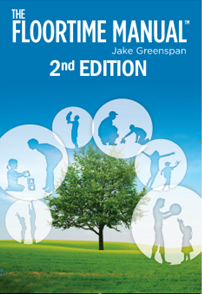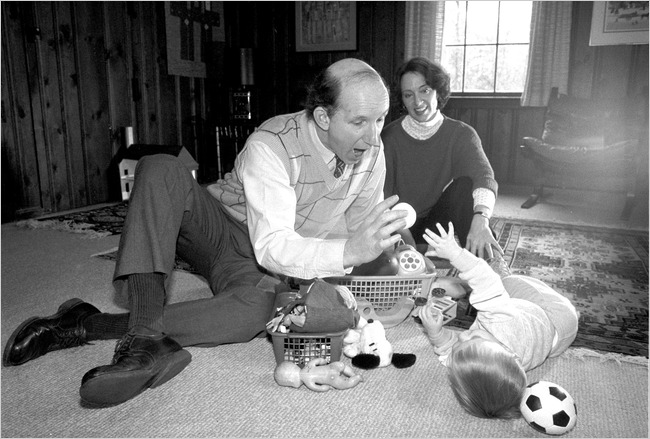Neurodivergence and Neuropotential:
Embracing the Spectrum of Human Minds
(Stanley I Greenspan MD Inc. and its intervention, The Greenspan Floortime Approach®, DO NOT endorse or support ICDL or its DIRFloortime curriculum)
The human brain is a complex and wondrous organ, with each individual possessing a unique neurological makeup. In recent years, two concepts have emerged to describe this variability: neurodivergence and neuropotential. While both acknowledge the diverse ways our brains function, they offer different perspectives on this spectrum. Some people see these concepts as being at odds, but Dr. Greenspan’s framework integrates them and sees them working together as a societal imperative.
Neurodivergence is a term that describes the variations in how people’s brain’s function, learn, and process information. It encompasses a wide range of neurological differences, including diagnoses like ASD, ADHD, Dyslexia, Dyspraxia, etc. Neuropotential refers to the brain’s inherent capacity for change and development. It highlights the brain’s remarkable ability to adapt, learn, and reorganize itself throughout life, regardless of diagnosis. This concept is rooted in neuroplasticity, the brain’s ability to form new neural connections and pathways in response to experiences.
Neurodivergence and Neuropotential
| Feature | Neurodivergence | Neuropotential |
| Primary Focus | Neurological differences | Potential for growth |
| Perspective on Differences | Natural variations | Opportunities for development |
| Goal | Acceptance and inclusion | Maximizing individual potential |
| Emphasis | Valuing all cognitive styles | Fostering growth and adaptation |
Unfortunately, misinterpretations of what it means to ‘respect neurodivergence’ influence educational and therapeutic programs negatively, impacting children’s long-term health. One of the most common misunderstandings of ‘respecting neurodivergence’ or ‘neurodivergent affirming care’, is that neurodivergent children should not be challenged to learn new things. Being neurodivergent myself, and having been pushed to learn new things in both toxic and supportive manners, I can say without a doubt that the people who challenged me in supportive ways, were highly respectful of my neurodivergence. However, the people who were rigid, controlling, directive, and used compliance-based adult-let teaching methods were not. The key lies in how we challenge and what we ask of a child, not in the avoidance of challenges altogether.
Neurodivergent affirming strength-based interventions like Greenspan Floortime® emphasize honoring a child’s needs, feelings, and opinions. However, this doesn’t equate to unlimited freedom. It’s important to recognize that every experience a child has impacts their brain development, and depending on the type of experience, they can lead to more rigid or more adaptive ideation and functioning. While we should follow their lead, we also have a responsibility to create environments that nurture their growth and limit access to choices that could be dangerous or hinder their long-term health. Recent research sheds additional light on how the brain changes with every experience and that the environments we spend time in have the potential to ‘move us forward’ or ‘hold us back’. These experiences and environments lead to changes neurologically and genetically, making decisions about where and how children spend their time more important than ever.
Neurodivergent Variations in our Brains are Not Fixed
Neurodivergence is most often used to refer to autistic individuals and those with ASD, as well as individuals with ADHD and other learning differences. These diagnostic labels refer to broad spectrums of symptoms and levels of functioning. While most individuals will experience these natural variations in neurological wiring continuously throughout their lives, over time these variations will naturally become more defined and rigid or more dynamic and adaptive. A growing body of research sheds light on this potential and how our experiences and our environments impact us. Neurodivergence is not solely determined by genetics or neurological structure; rather, it is a dynamic process shaped throughout the lifespan. This fluidity has a particularly profound impact on child development, underscoring the critical importance of actively supporting a child’s growth and providing “healthy” experiences. Let’s start by looking at “extreme” examples of these concepts.
- Should a child be allowed t0 primarily eat sugary foods or spend the majority of their time using digital media simply because they prefer them?
- Does respecting one’s neurodivergence mean that we encourage all of an individual’s behaviors, even if they are potentially “unhealthy” and driven by a type of impulse, habit, or addiction?
Children aren’t born craving sugar or screens. These are learned behaviors resulting from their environment. These interests are often reinforced by their addictive nature and use as rewards (which increases seeking of them and gives them extra value). An overgeneralization of respecting neurodivergence encourages parents and professionals to allow these habits to solidify and turn into addictions. Instead, we should actively support children in making healthier choices.
The majority of children begin life with similar potentials and without these destructive interests. A supportive environment that addresses their needs and encourages social interaction can help them make healthier choices. Using extremes, like screens and sugar, help us paint this picture, but the sad reality is that all habitual behavior activates the reward centers of the brain, making them all potentially addictive over time. This means that children who need to regularly perform certain repetitive behaviors in a rigid manner are ‘addicted’ or becoming addicted to that behavior.
- Does ‘neurodivergent respect’ suggest that repetitive behaviors stemming from ‘addiction’ should be seen as a ‘natural variation’ and an element of an individual’s neurodivergence?
- Should we be encouraging those behaviors by allowing a child to engage in them whenever they feel like it?
- Should we be using the child-centered neurodiversity affirming supportive version of ‘challenging’ outlined in The Greenspan Floortime Approach to help them grow and expand their social-emotional health from the ground up?
To effectively answer these questions, it is important to understand human development and neuroplasticity.
**The Greenspan Floortime Approach® provides parents and professionals with tools to help them join their child’s world and create a shared world. We don’t recommend discouraging all of these habitual behaviors, but instead we encourage adults to become part of them and eventually help expand the self-involved behaviors into preferred shared social experiences.
Human Development, Neuroplasticity, and being Growth Minded
Our brains are constantly changing and adapting in response to our experiences. This neuroplasticity means we are not defined by fixed personality profiles or a fixed genetic expression, but we have the potential to grow and evolve throughout life. As our understanding of epigenetics and neuroplasticity expands, research on these becomes even more important. Current studies refute outdated notions of fixed personalities and highlight the incredible potential within each of us while promoting a more inclusive understanding of human potential. This research should inform educational practices, therapeutic approaches, and societal attitudes, fostering an environment where everyone can thrive while still being seen and respected as individuals with differences in how our brains work.
In one recent study, neurologists found that the brain is highly influenced by our environment and daily activities. These factors are causing lasting changes in our brains, and we are constantly neurologically changing on a daily basis. (https://journals.plos.org/plosbiology/article?id=10.1371/journal.pbio.3002797#abstract0)
- Physical activity can reshape your brain: Exercise not only boosts your body but also strengthens connections between different brain regions, improving memory and mental flexibility.
- The impact lasts longer than you think: Stress, a tough workout or a sleepless night can affect your attention, thinking, and memory for days, even up to a week later.
- Even small changes matter: Subtle shifts in your mood or heart rate can leave traces in your brain for up to two weeks.
- Take charge of your brain health: Managing stress and staying active can make your brain more adaptable and resilient, leading to better mental well-being and a higher quality of life.
- Your daily choices shape your brain: Every day, you have the power to influence your brain’s function and connectivity through the lifestyle choices you make for yourself or those you care for.
Epigenetics reveals that our genes are not a fixed blueprint either, and are constantly interacting with our environment. Like a conductor guiding an orchestra, epigenetics determines which genes are expressed and how strongly. This “conductor” responds to our experiences, emotions, and even lifestyle choices, influencing which “notes” (genes) are played. This means that while we inherit our genes, their expression is shaped by our environment. Epigenetics highlights the dynamic interplay between nature and nurture, showing that our genes and environment are intertwined partners. This has profound implications for our health and well-being, suggesting we have more influence over our development than previously thought. By understanding epigenetics, we can appreciate the complexity of human development, our remarkable adaptability, and our potential. (https://www.ncbi.nlm.nih.gov/pmc/articles/PMC3752894)
The Greenspan/DIR™ Model and The Greenspan Floortime Approach® offer a powerful framework for understanding and supporting neurodivergent individuals. This approach recognizes and celebrates the unique strengths and potential of each child, while also acknowledging the importance of societal and cultural perspectives of how we view and respect an individual’s unique developmental profile (neurodivergence). By integrating the latest research on human development and neuroplasticity, Dr. Greenspan’s framework encourages a “growth mindset” that fosters optimal development (neuropotential). Rather than seeing Neurodivergence and Neuropotential as conflicting ideas, Dr. Greenspan’s framework views them as complementary concepts. By embracing both, we can create a more inclusive and supportive environment where all individuals can thrive.
The Greenspan/DIR™ Model and Greenspan Floortime® are Strength-Based
Dr. Greenspan formulated his Greenspan/DIR™ Model in part using the concept of progressive development established by Piaget. He chose three distinct terms to convey the idea of progressive development building on prior development by using the terms Milestones, Levels, and Stages. These termsconvey a sense of progression and achievement in child development. This concept of progressive growth is one of the key elements for his framework, making it a strength-based framework.
Unfortunately, other non-Greenspan/DIR groups have excluded the term and concept of Milestones in their curricula and chose to only use the term and concept Capacities. Capacities alone is interpreted as a collection of abilities without the inherent sense of sequential development and interconnectedness that Milestones provide.
An example of this strength-based feature of Dr. Greenspan’s framework is how we use his Milestones to describe a child’s individual profile and support their optimal social, emotional, and cognitive development/growth. One of the most common and observable developmentally progressive moments is when a child begins to show reciprocity within caregiver-child interactions (Greenspan/DIR Milestone 3: Two-Way Communication, i.e. closing and opening circles of interaction).
- By engaging in fun and frequent interactions within a meaningful relationship with an adaptive adult, this milestone can become mastered.
- The more frequent the opportunities to practice this Milestone, the stronger it becomes.
- As the child begins to master Milestone 3, the child consistently responds within interactions (closing circles) and begins to initiate interactions (opening circles).
- Initially this sub-capacity is used to get a caregiver’s attention and also to help get different needs met.
- Initiating in order to get a need met (Milestone 3: Closing and Opening Circles) is also used for Shared Social Problem Solving within Milestone 4.
By experiencing ‘fun’ problems within meaningful exchanges with an adaptive and playful caregiver, children can further practice Shared Social Problem-Solving and begin to master longer and dynamic “chains” (patterns) of social communication. The child’s Shared Social Problem-Solving abilities will become more complex and flexible/adaptive leading to longer and longer interactions known as The Continuous Flow of Interaction, within Milestone 4.


The Continuous Flow of Interaction (in Greenspan/DIR Milestone 4) is also referred to as Proto-Conversations by neurologists who have identified it as a necessary precursor to language. Language is a form of Meaningful Symbolic Use of Ideas, Greenspan/DIR Milestone 5. Hopefully, you can see how Dr. Greenspan believed we could use a child’s strengths to encourage growth without targeting a ‘deficit’ or what’s missing
Read more about the importance of using Milestones vs Capacities and why the terminology we choose matters.
| Individualized Development: | Focus on Abilities, Not Deficits: |
                  |                   |
| Building Blocks for Growth: | Emphasis on Social-Emotional Development: |
                  |                   |
Conclusion:
Both neurodivergence and neuropotential offer valuable perspectives on the spectrum of human minds.
Keys Elements:
- Both challenge the notion of a single “normal” brain.
- Both recognize the unique strengths and challenges associated with different neurological profiles.
- Both promote a more inclusive and supportive environment for individuals with diverse cognitive styles.
- Neurodiversity is often used in the context of specific neurological conditions, while neuropotential applies to everyone, regardless of diagnosis.
While neurodivergence encourages us to embrace and celebrate our differences, neuropotential reminds us that we all have the capacity for growth and change. By understanding and appreciating both concepts, we can create a more inclusive and supportive society that values the unique contributions of every individual while providing developmentally appropriate environments that encourage growth.


Unlock the secrets of Dr. Greenspan’s Floortime: Learn to APPLY Greenspan Floortime. Purchase the comprehensive Floortime Manual 2nd Edition and embark on a journey of joyful, meaningful communication with your child


Earn a Greenspan Floortime Certificate: Take your expertise to the next level and earn an official Greenspan Floortime Certificate, recognized worldwide.


Experience Personalized Guidance: Accelerate your progress with individualized coaching, virtual or in-person, tailored to your unique needs and goals.
Please contact us with any questions or requests, info@stanleygreenspan.com